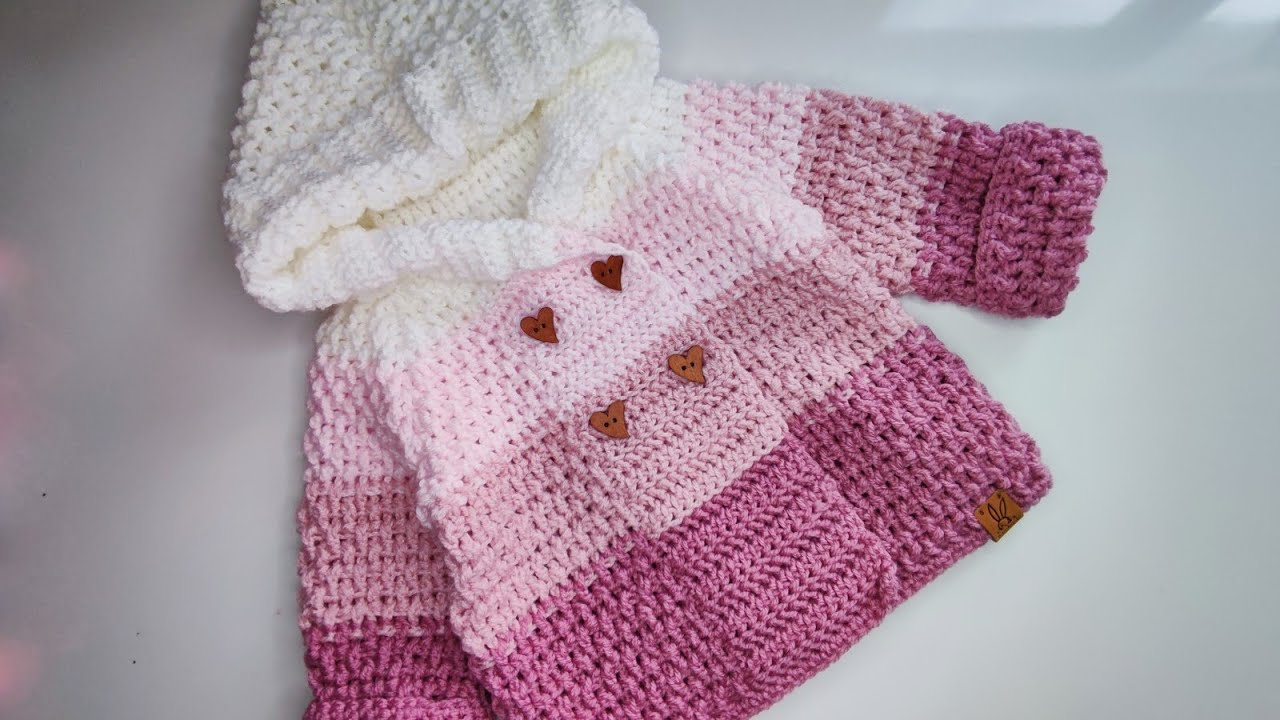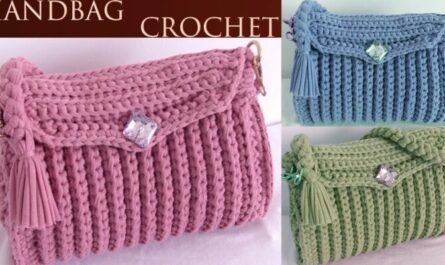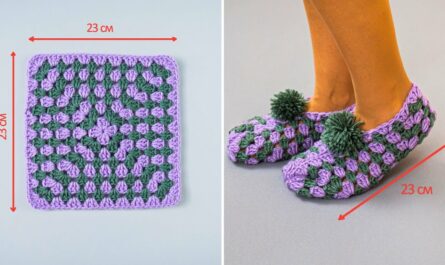There’s something uniquely comforting about wrapping a little one in a handmade coat, especially when that coat is crafted with love, stitch by cozy stitch. A crocheted baby coat offers the perfect blend of warmth, practicality, and undeniable cuteness, making it an ideal project for crafters looking to create a cherished garment for a special baby, whether a boy or a girl.
This detailed guide will walk you through the essential steps and considerations for crocheting a snug and stylish baby coat, perfect for welcoming winter, bracing against chilly breezes, or simply adding an extra layer of adorable warmth.
Why Crochet a Baby Coat?

- Warmth & Comfort: Unlike lighter cardigans, a coat is designed for true warmth, making it perfect for cooler seasons or brisk outings. You control the yarn, ensuring optimal softness and insulation.
- Personalized & Unique: Create a one-of-a-kind garment that perfectly matches your vision, whether it’s a vibrant hue for a playful personality or a classic neutral for timeless elegance.
- Heirloom Quality: A handmade coat often becomes a treasured family heirloom, passed down and cherished for its craftsmanship and the love woven into every stitch.
- Skill Building: Crocheting a coat is a fantastic opportunity to advance your crochet skills, mastering garment construction, shaping, and finishing techniques.
- Thoughtful & Practical Gift: A handmade coat is a truly loving and practical gift for a baby shower, a first birthday, or a “just because” present.
Key Elements of a Baby Coat:
Designing a successful baby coat involves several considerations, ensuring it’s both functional and charming for boys and girls.
- Gender-Neutral Design (Optional but Popular):
- Colors: Opt for universally appealing shades like creams, greys, whites, sage greens, soft yellows, muted blues, browns, or even gentle variegated yarns.
- Stitch Patterns: Choose textures that aren’t overly frilly or overly masculine. Simple ribbing, moss stitch, or uniform stitch patterns like hdc create a timeless look.
- Embellishments: Consider neutral appliques (bears, foxes, stars), simple wooden buttons, or toggles.
- Yoke/Bodice: Often worked top-down for minimal seaming, a comfortable fit, and easy shaping. Raglan (diagonal shoulder seams) is a very common and effective style.
- Sleeves: Full-length sleeves are essential for a coat, ensuring warmth down to the wrists. They should be comfortable and allow for movement.
- Body Length: A coat is typically longer than a cardigan, extending down to the hips or even mid-thigh for extra warmth.
- Closure: Buttons (classic), toggles (chunky and cute), or even a zipper (less common for crochet due to complexity) are used for the front opening.
- Collar or Hood (Optional but Recommended): Adds significant warmth and defines the style. A hood is particularly practical for keeping little heads warm.
- Pockets (Optional): Small patch pockets can add a cute detail and a place for tiny treasures.
- Durability: Choose yarns and stitch patterns that hold up well to active baby wear and frequent washing.
Choosing Your Tools & Materials:
The right supplies are crucial for creating a warm, comfortable, and durable baby coat.
- Yarn: The Heart of the Coat’s Warmth!
- Fiber:
- Superwash Merino Wool: An excellent choice for a coat. It’s incredibly soft, provides excellent warmth without bulk, is breathable, and, importantly, is machine washable (always check the label!).
- Acrylic Blends (e.g., Acrylic/Wool, Acrylic/Nylon): Modern acrylic yarns are wonderfully soft, durable, hypoallergenic, and very easy to care for. They are often more affordable and come in a vast range of colors. A solid choice for a sturdy coat.
- Cotton/Acrylic Blends: If you want a slightly lighter “coat” for milder cool weather or for layering, these can be a good option, offering softness and breathability. However, pure cotton might not be warm enough for a true winter coat.
- Weight:
- Worsted (Aran / Category 4): Ideal for a warm, substantial coat. It works up relatively quickly and creates a cozy fabric.
- DK (Double Knitting / Category 3): Can also be used for a coat, especially if you want a slightly denser fabric by using a hook size at the smaller end of its range, or if you prefer a slightly lighter coat.
- Color Palette: For gender-neutral, consider classic greys (light to charcoal), creams, whites, deep blues, forest greens, mustard yellows, or earthy browns. For specific genders, the possibilities are endless – traditional blues, pinks, and purples work beautifully.
- Quantity: Varies significantly by size and yarn weight. For a 0-6 month coat, expect 500-800 yards; for 6-18 months, 800-1200 yards; for 18-24 months, 1000-1500+ yards. Always check your chosen pattern’s recommendations.
- Fiber:
- Crochet Hook:
- Consult your chosen yarn label for a suggested hook size (e.g., 4.0mm, 4.5mm, 5.0mm for Worsted/DK).
- Crucial for Garments: Your actual hook size will be determined by achieving the correct gauge for your pattern. You’ll likely need to go up or down by half a size from the label’s suggestion.
- Other Notions:
- Stitch Markers: Essential for marking raglan lines, the beginning of rounds, or specific shaping points.
- Tapestry Needle: For neatly weaving in all yarn ends and sewing any appliques.
- Scissors.
- Buttons or Toggles: 3-6 (or more for a longer coat) small to medium-sized buttons or toggles that complement your chosen colors. Opt for flat buttons for comfort.
- Sewing Needle & Matching Thread: To securely attach buttons/toggles.
- Blocking Mats & T-Pins: (Highly recommended) For shaping and finishing your garment.
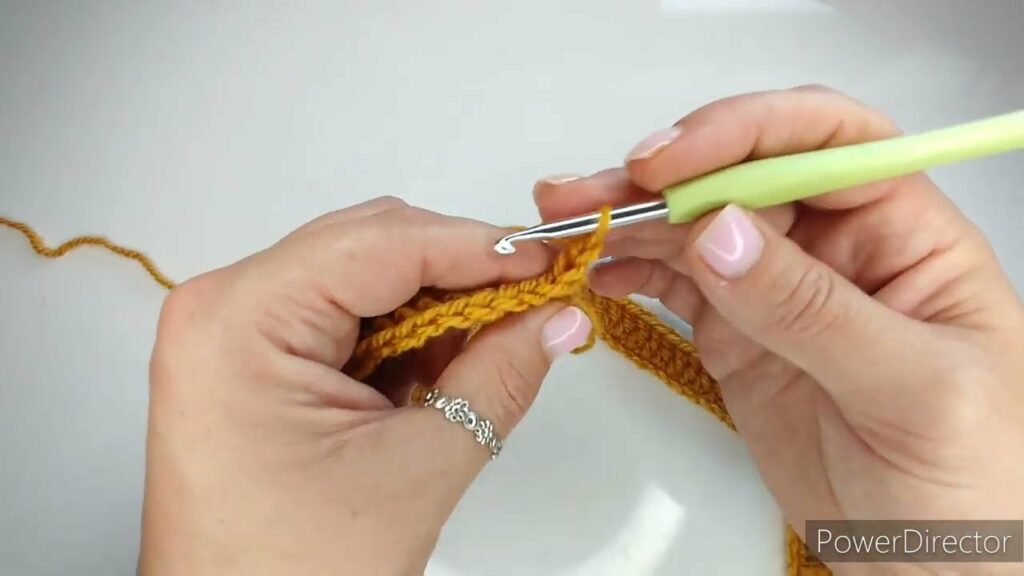
Understanding Sizing & Gauge (ABSOLUTELY CRITICAL for Garments!)
Accurate sizing is the cornerstone of a well-fitting and comfortable garment. Crocheting garments without checking gauge is the most common reason for projects not fitting.
General Baby Coat Sizing (Approximate Measurements):
| Size | Approx. Chest Circ. | Approx. Finished Body Length (Shoulder to Hem) | Approx. Sleeve Length (Underarm to Cuff) |
|---|---|---|---|
| 0-3 Months | 18 inches | 11-12 inches | 6-7 inches |
| 3-6 Months | 20 inches | 12-14 inches | 7-8 inches |
| 6-12 Months | 22 inches | 14-16 inches | 8-9 inches |
| 12-18 Months | 23 inches | 16-18 inches | 9-10 inches |
| 18-24 Months | 24 inches | 18-20 inches | 10-11 inches |
Export to Sheets
Disclaimer: These are general averages. Always refer to the specific pattern’s measurements and sizing chart.
How to Make a Gauge Swatch (Do NOT Skip This Step!):
- Chain: Chain about 25-30 stitches, plus any turning chains (e.g., ch 3 for dc) as per your chosen main stitch pattern.
- Work: Crochet a square of at least 6×6 inches (15×15 cm) in the main stitch pattern you’ll be using for the coat. A larger swatch provides a more accurate measurement.
- Wash & Block: Fasten off your swatch. Crucially, wash and block your swatch exactly as you plan to treat the finished garment. This step relaxes the fibers and reveals the true stitch size and drape after washing, which can change significantly.
- Measure: Once dry, lay the swatch flat. Place a ruler over the center. Count how many stitches fit within 4 inches (10 cm) and how many rows fit within 4 inches (10 cm).
- Adjust:
- If you have more stitches per inch than your pattern (or desired gauge) states (your work is too tight), go up half a hook size and re-swatch.
- If you have fewer stitches per inch than your pattern states (your work is too loose), go down half a hook size and re-swatch.
- Repeat until your gauge precisely matches.
General Stitch Patterns for a Baby Coat:
- Main Body (for warmth and structure):
- Half Double Crochet (hdc): Creates a dense, warm fabric with good drape. Excellent for coats.
- Double Crochet (dc): Works up quickly, creates a softer drape, suitable for a coat if a slightly looser fabric is desired.
- Single Crochet (sc): Creates a very dense and warm fabric. It takes longer to work up but results in a sturdy coat.
- Moss Stitch (Linen Stitch): (sc, ch 1, sk 1) Creates a beautiful, dense, textured fabric with good drape. Great for a gender-neutral look.
- Textural Stitches (for visual interest and warmth):
- Front Post/Back Post Double Crochet (fpdc/bpdc): Creates excellent ribbing for cuffs, hems, and collars.
- Puff Stitch / Bobble Stitch / Cluster Stitch: Can be incorporated for subtle texture or as small decorative elements.
- Edging:
- Single Crochet (sc): For neat, firm edges on necklines or button bands.
- Slip Stitch (sl st): For clean, minimal finishing edges.
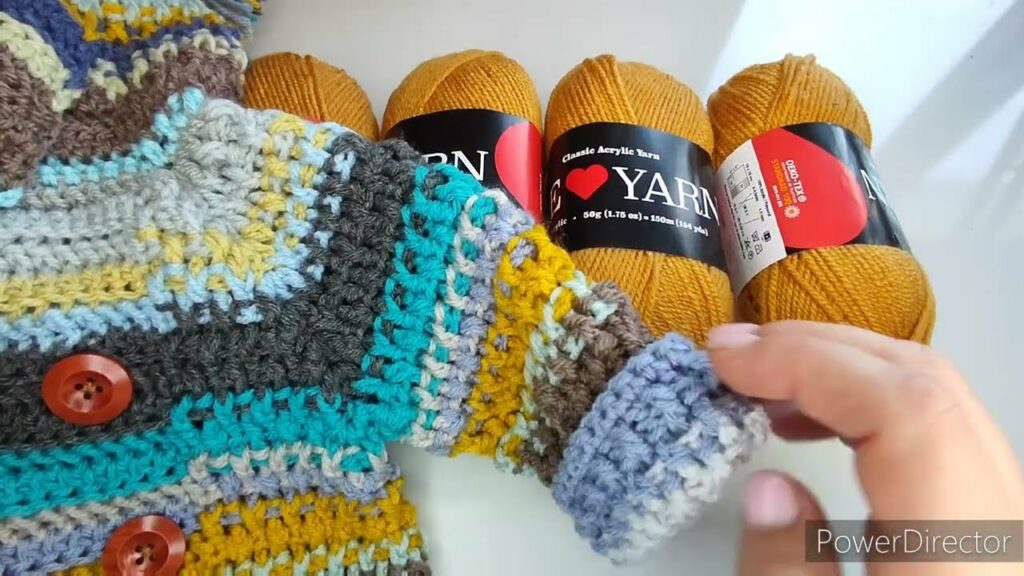
Step-by-Step Construction: The Baby Coat (Top-Down, Raglan Yoke)
This outline describes a common and highly favored construction method for baby coats due to minimal seaming and ease of customization. This is a general guide to the methodology; for precise stitch counts, specific increase/decrease rates for different sizes, and unique design details, you MUST use a detailed crochet pattern.
Phase 1: The Yoke (Top-Down, Raglan Shaping with Front Opening)
This forms the neckline, shoulders, and upper chest, worked in rows from the top down.
- Step 1.1: Starting Chain & Neckband/Button Band
- Foundation Chain: Chain the number of stitches specified by your pattern for the neckline circumference, plus extra stitches for the front button bands.
- Neckband/Button Band Rows: Ch 1 (or ch 2/3 for taller stitches). Work 3-5 rows in sc, hdc, or sc blo (for a ribbed band) across the entire chain. This forms the continuous neckband and button bands.
- Buttonholes: On one side of the front opening (usually the wearer’s right side, or as per pattern), create small, evenly spaced buttonholes on designated rows (e.g., ch 2, skip 2 stitches, then work into the ch-2 space on the next row).
- Step 1.2: Setting Up Raglan Yoke Divisions (First Increase Row)
- First Yoke Row (Raglan Setup): This row divides your total stitches into: Front Panel 1 (including button band), Sleeve 1, Back Panel, Sleeve 2, and Front Panel 2 (including button band). You will have 4 raglan corners where all shaping increases occur.
- Work your main stitch (e.g., hdc or dc) for Front Panel 1. At the first raglan corner, work your increase (e.g.,
(2 dc, ch 2, 2 dc)or(dc, ch 1, dc)). Place a stitch marker (SM) in the ch-2 or ch-1 space. Continue this pattern for Sleeve 1, Back Panel, Sleeve 2, Front Panel 2, with increases at each raglan corner. Turn.
- Work your main stitch (e.g., hdc or dc) for Front Panel 1. At the first raglan corner, work your increase (e.g.,
- First Yoke Row (Raglan Setup): This row divides your total stitches into: Front Panel 1 (including button band), Sleeve 1, Back Panel, Sleeve 2, and Front Panel 2 (including button band). You will have 4 raglan corners where all shaping increases occur.
- Step 1.3: Continuing Yoke Increases
- Subsequent Yoke Rows: Continue working your main stitch across, and work your specified increase into each of the 4 raglan spaces from the previous row. Move your stitch markers up to the new increase spaces. Turn.
- Continue working these increase rows until the yoke measures the correct depth from the top of the neckline to the underarm for your chosen size. Ensure you continue adding buttonholes on your button band at regular intervals.
Phase 2: Separating for Body & Sleeves
Once the yoke is the correct depth, you’ll divide the stitches to create the armholes.
- Separation Row:
- Work stitches for Front Panel 1 (including button band).
- Work into Raglan Corner 1.
- Skip Sleeve 1: Place all stitches of Sleeve 1 (the stitches between Raglan Corner 1 and Raglan Corner 2) onto a piece of scrap yarn or a stitch holder.
- Underarm Chain: Chain 2-4 stitches (this creates extra room at the underarm and fills the gap).
- Work into Raglan Corner 2.
- Work stitches for the Back Panel.
- Work into Raglan Corner 3.
- Skip Sleeve 2: Place all stitches of Sleeve 2 onto a holder.
- Underarm Chain: Chain 2-4 stitches.
- Work into Raglan Corner 4.
- Work stitches for Front Panel 2 (including button band). Turn.
Phase 3: The Body (Torso) of the Coat
This forms the main body of the garment below the armholes.
- First Body Row: Continue working flat across the front panels, back panel, and the underarm chains. This continues the front opening with the button bands.
- Continuing Body Rows: Continue working in rows using your chosen main stitch (e.g., hdc, dc, or moss stitch).
- Shaping: Maintain the width of the body, or add very slight increases for a gentle A-line shape, or decreases for a straighter fit, as specified by your pattern.
- Length: Continue working until the body reaches the desired length from the underarm to the hem for your chosen size (typically mid-hip to mid-thigh for a coat).
- Hem/Bottom Ribbing: Finish the body with a few rows of ribbing (e.g., fpdc/bpdc or sc blo) for a neat and slightly elastic edge.
Phase 4: The Sleeves (Make 2)
Each sleeve is typically worked in the round from the armhole down to the cuff.
- Attach Yarn: Attach your yarn to the center underside of one armhole opening (where your underarm chain was).
- Pick Up Stitches: Work a round of your main stitch, picking up stitches evenly around the armhole opening (including into the underarm chain stitches). Join with a sl st to the first stitch to form a round.
- Working the Sleeve: Continue working in rounds using your main stitch pattern.
- Shaping: Gradually decrease stitches evenly spaced over several rounds to taper the sleeve towards the wrist (check your pattern for specific decrease rates).
- Length: Work until the sleeve reaches the desired full length from the underarm to the wrist.
- Cuff Ribbing: Finish the sleeve with a few rows of ribbing (fpdc/bpdc or sc blo) for a comfortable and snug cuff.
- Fasten off. Repeat for the second sleeve, ensuring it is symmetrical to the first.
Phase 5: Collar or Hood (Optional)
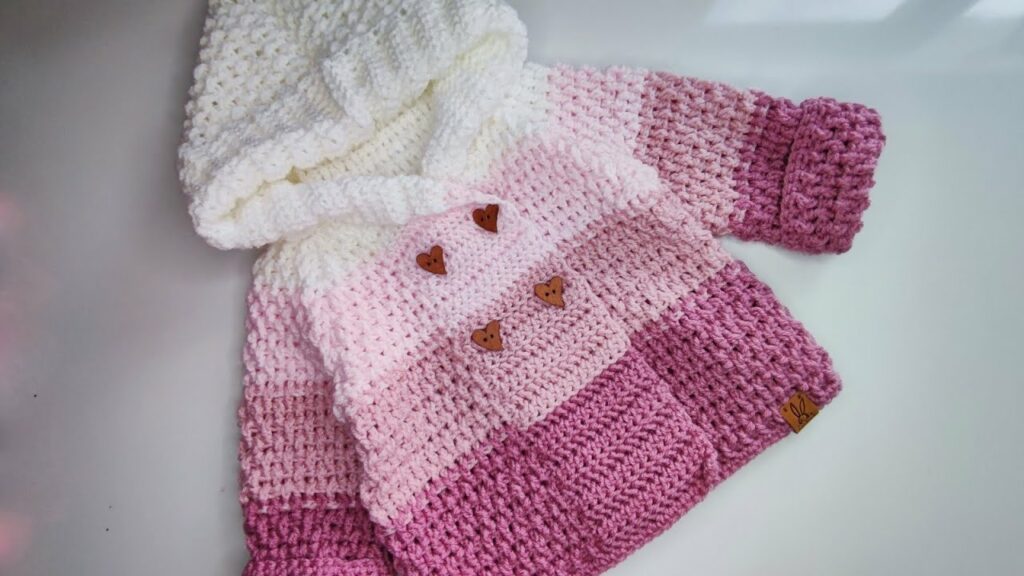
Adding a collar or hood provides extra warmth and defines the coat’s style.
- Collar:
- Pick up stitches evenly around the entire neckline (excluding the button bands, unless your pattern integrates them).
- Work in rows (or rounds, if a standing collar) using a stitch like hdc or ribbing (fpdc/bpdc). Shape as desired (e.g., by increasing at corners for a flat collar, or working straight for a standing collar).
- Hood:
- Pick up stitches evenly around the entire neckline.
- Work in rows, increasing stitches at the back center to shape the hood.
- Continue working until the hood reaches the desired depth.
- Fold the hood in half and seam the top edge together using slip stitches or a tapestry needle.
Phase 6: Finishing Touches
These final steps bring your garment to a professional and durable completion.
- Weave in All Ends: Using your tapestry needle, meticulously weave in every single yarn tail. Secure them firmly by weaving them into existing stitches in different directions. This is crucial for a neat, durable, and safe finish (no loose ends for little fingers).
- Attach Buttons/Toggles: Sew your chosen buttons or toggles securely to the button band, aligning them precisely with the buttonholes you created. Double-check that they are very firmly attached, as buttons can be a safety concern for children if loose.
- Blocking (ABSOLUTELY CRUCIAL for Garments!):
- Gentle Wash: Fill a basin with cool water and a small amount of mild, wool-friendly detergent (even for acrylic blends). Gently submerge the coat and let it soak for 20-30 minutes. Do not agitate vigorously.
- Rinse: Gently squeeze out the soapy water (do not wring or twist). Rinse under cool, running water until all soap is gone.
- Remove Excess Water: Gently roll the coat in a clean, dry towel and press firmly to absorb as much water as possible.
- Shape & Dry: Lay the coat flat on blocking mats. Gently stretch and shape it to the correct finished dimensions (chest, length, sleeve length, hood/collar shape) for your chosen size. Smooth out any unevenness and define the edges. Use rust-proof T-pins to hold the shape firmly.
- Air Dry Completely: Allow the coat to air dry completely. Blocking truly transforms the fabric, softening it, evening out your stitches, enhancing the drape, and giving your baby coat a beautifully polished, professional appearance.
Tips for Baby Coat Success:
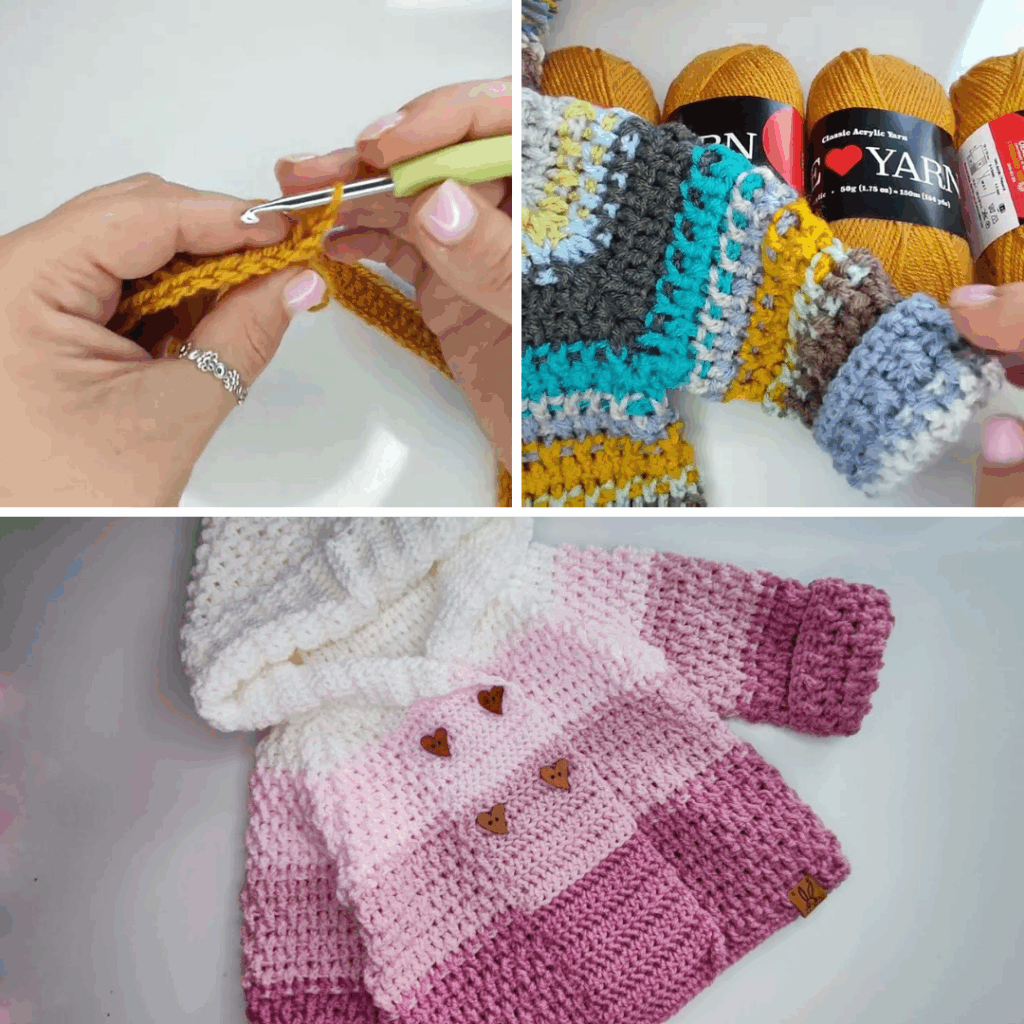
- Yarn Choice is Paramount: Prioritize warmth, softness, and durability, especially for a coat that will see a lot of use.
- Gauge Consistency: It’s the most important factor for achieving the correct size and fit.
- Seamless (or minimal seams): A top-down construction significantly reduces bulky seams, making the coat more comfortable for a baby.
- Button/Toggle Security: Always double-check that all closures are very firmly attached to prevent them from becoming choking hazards.
- Measure Frequently: Babies grow fast! Compare your work as you go to a similar-sized commercial garment or a child’s measurements to ensure a good fit.
- Gender-Neutral Design: Achieved through thoughtful color choices (greys, creams, greens, yellows) and versatile stitch patterns.
Care Instructions for Your Handmade Coat:
- Always follow your yarn label’s specific care instructions. This will dictate whether it’s hand wash only, machine wash gentle, or machine dry.
- Reshape and Lay Flat to Dry: Always gently reshape the coat while wet and lay it flat on a clean towel or drying rack to air dry completely. Do not hang, as this can stretch the fabric and distort the garment’s shape.
video tutorial ;
Creating a crocheted baby coat is a deeply rewarding project. With every stitch, you’re not just making a piece of clothing; you’re infusing warmth, comfort, and love into a garment that will snugly embrace a special little one, keeping them cozy and stylish through cooler days. Happy hooking! Sources
